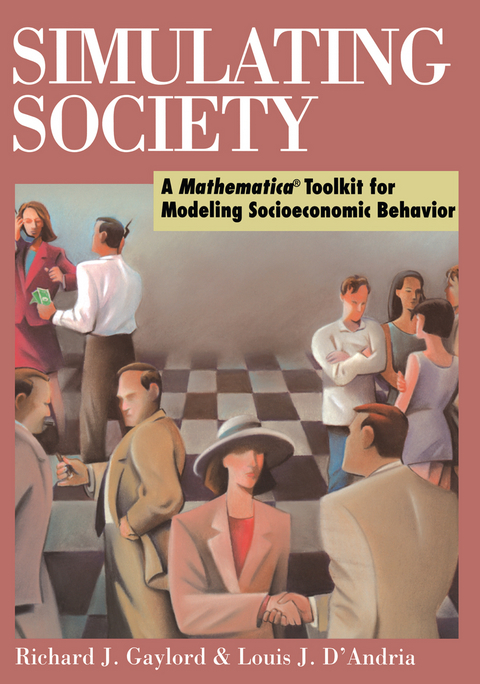
Simulating Society
A Mathematica®Toolkit for Modeling Socioeconomic Behavior
Seiten
1998
|
Softcover reprint of the original 1st ed. 1998
Springer-Verlag New York Inc.
978-0-387-98532-9 (ISBN)
Springer-Verlag New York Inc.
978-0-387-98532-9 (ISBN)
In "Simulating Scoiety", the authors explore the basis for social and economic behavior. The usefulness of computer simulations in the social sciences is that it provides a laboratory in which qualitative ideas about social and economic interations can be tested.
In "Simulating Scoiety", the authors explore the basis for social and economic behavior. Using the methodology of computer simulation, specifically cellular automata, they model various factors that are involved in a system of individuals (or agents) who interact socially and economically with one another. The usefulness of computer simulations in the social sciences is that it provides a laboratory in which qualitative ideas about social and economic interations can be tested. This brings a new dimension to the social sciences where 'explanations' abound, but are rarely subject to much experimental testing. Mathematica is used as the programming language for implementing these models as cellular automata simulations. The authors have chosen this language because it has a number of features which make it uniquely qualified to be used by social scientists, especially those without expertise in computer programming. Users can easily access the various 3.0 Mathematica notebooks, and readily interact with them, the full text of the printed book, itself, and other data contained on www.telospub.com.
In "Simulating Scoiety", the authors explore the basis for social and economic behavior. Using the methodology of computer simulation, specifically cellular automata, they model various factors that are involved in a system of individuals (or agents) who interact socially and economically with one another. The usefulness of computer simulations in the social sciences is that it provides a laboratory in which qualitative ideas about social and economic interations can be tested. This brings a new dimension to the social sciences where 'explanations' abound, but are rarely subject to much experimental testing. Mathematica is used as the programming language for implementing these models as cellular automata simulations. The authors have chosen this language because it has a number of features which make it uniquely qualified to be used by social scientists, especially those without expertise in computer programming. Users can easily access the various 3.0 Mathematica notebooks, and readily interact with them, the full text of the printed book, itself, and other data contained on www.telospub.com.
1: Modeling a Society of Mobile Heterogeneous Individuals.- 2: Transmitting Culture.- 3: Deciding Whether to Interact.- 4: Choosing How to Behave.- 5: Grouping and Conforming.- 6: Social Networking and Moving to Far-Flung Locations.- Appendix B: List and Matrix Essentials.- Appendix C: Graphics and Efficiency.
| Zusatzinfo | XXIII, 218 p. |
|---|---|
| Verlagsort | New York, NY |
| Sprache | englisch |
| Maße | 178 x 254 mm |
| Themenwelt | Informatik ► Grafik / Design ► Digitale Bildverarbeitung |
| Mathematik / Informatik ► Mathematik ► Angewandte Mathematik | |
| Sozialwissenschaften ► Soziologie | |
| Wirtschaft ► Allgemeines / Lexika | |
| Wirtschaft ► Betriebswirtschaft / Management | |
| Wirtschaft ► Volkswirtschaftslehre | |
| ISBN-10 | 0-387-98532-8 / 0387985328 |
| ISBN-13 | 978-0-387-98532-9 / 9780387985329 |
| Zustand | Neuware |
| Informationen gemäß Produktsicherheitsverordnung (GPSR) | |
| Haben Sie eine Frage zum Produkt? |
Mehr entdecken
aus dem Bereich
aus dem Bereich
Methoden, Konzepte und Algorithmen in der Optotechnik, optischen …
Buch | Hardcover (2024)
Hanser (Verlag)
CHF 55,95


